Pearls of Wisdom: Unveiling the Timeless Elegance of Pearl Jewelry

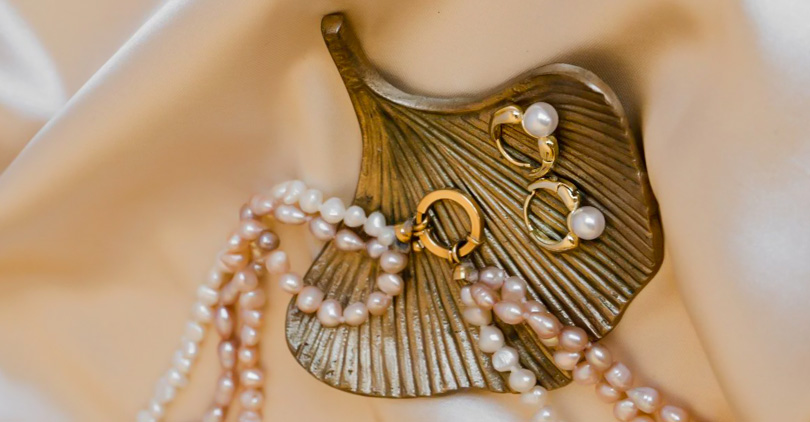
For centuries, people have admired pearls because they are beautiful and never go out of style. Kings and queens have worn pearl necklaces, while glamorous women have put pearl earrings into their pierced lobes.
Pearls' shiny loveliness has fascinated famous designers like Coco Chanel – as well as plenty of ordinary people – for a very long time. These gemstones seem to glow by themselves.
Pearls also have something else: symbolism. They've long been said to stand for purity along with femininity plus wisdom. And whereas most things dull as they get older, pearls (kind of magically) become more beautiful.
In this article, we're going to dive into the world of pearls: their intriguing past and the different types and colors available today.
The Birth of a Pearl: An Inside Look
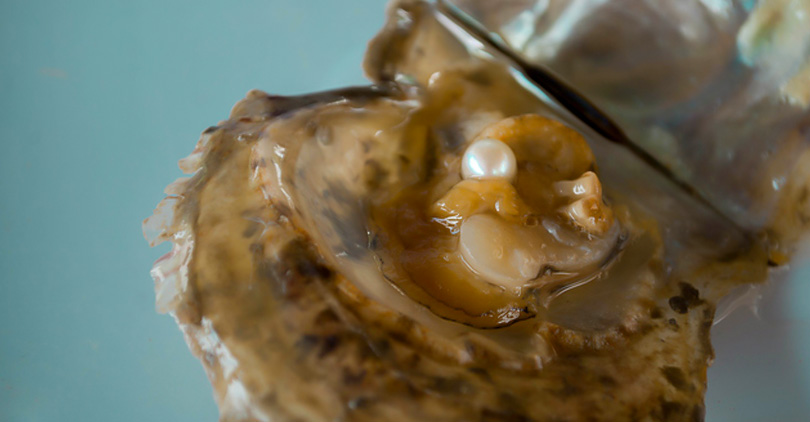
Pearls, sometimes referred to as "nature's gems," have fascinated humans for centuries. Unlike other precious stones that are harvested from the ground, pearls are unique in that they represent the sole instance of living creatures producing them.
The way in which they form is captivating: taking something banal and turning it into a radiant object.
The Irritant's Journey
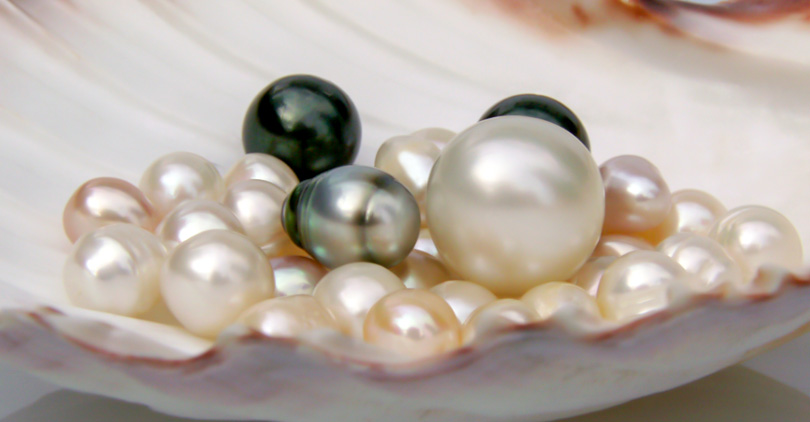
The creation of a pearl starts when something bothers a mollusk, like a grain of sand or a tiny parasite, getting inside its shell. To defend itself from the invader, the creature generates successive layers of a substance called nacre.
The Secretion of Nacre
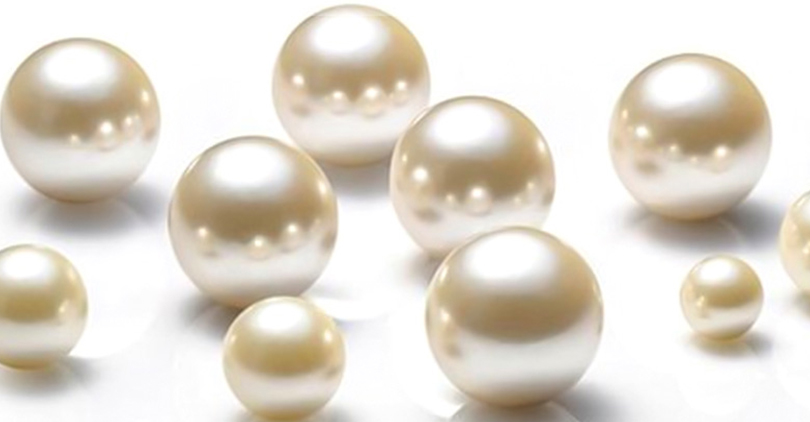
The mollusk consistently secretes nacre, a combination of calcium carbonate and proteins, in concentric layers over numerous months or years. This activity is the manner by which nature relieves bothers caused by the trespasser.
The outcome? A smooth round gem with a sparkling surface—truly reflecting light—which thusly makes pearls uncommon shine and appeal.
The Growth Process
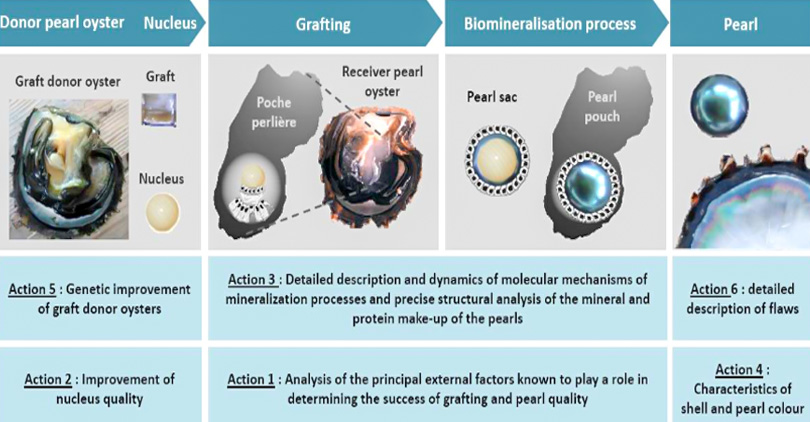
As more layers of nacre are produced, the pearl increases in size. The pearl will be bigger and have better luster if the mollusk produces nacre for a longer period.
This could take anywhere from six months to several years, depending on the species and circumstances, such as water temperature, salinity, and overall condition of the mollusk.
Harvesting the Treasure
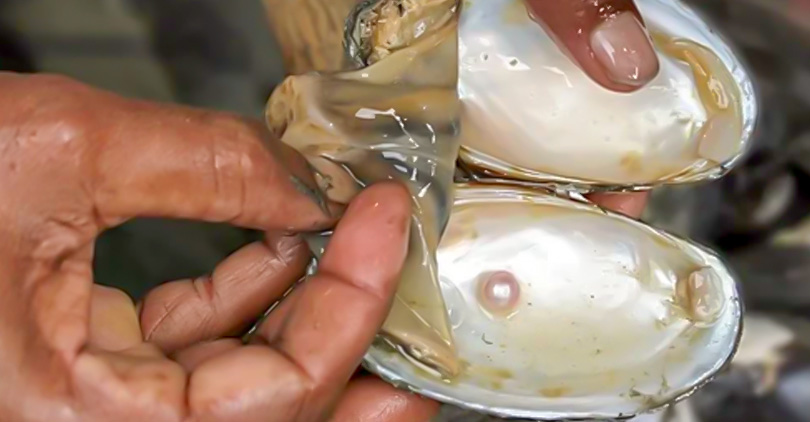
Once the pearl has achieved optimal size and quality, it is harvested with great care. This entails opening the shell of the mollusk and removing the pearl without causing injury to the animal. Skilled technicians must perform this procedure correctly so that the mollusk is able to produce pearls in subsequent cycles.
Pearls in the Spotlight
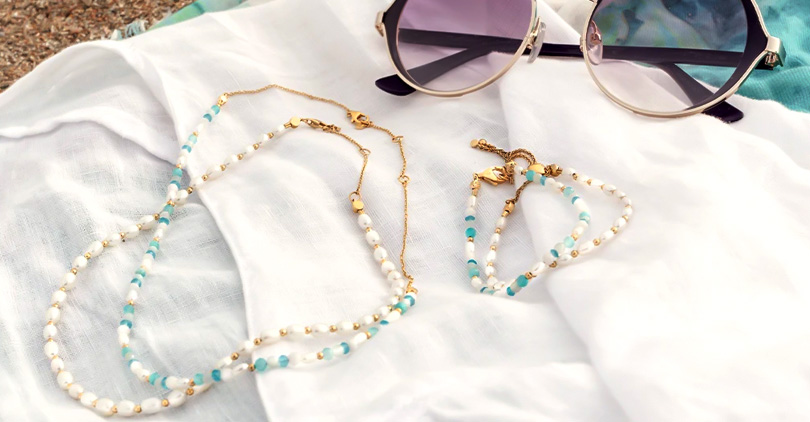
For centuries, people have valued pearls for their natural beauty and graceful shine. Within the world of pearl jewelry, there are four main types: Akoya, South Sea, Tahitian, and Freshwater pearls.
These gems all have something special to offer because they come from different places, have storied pasts behind them, and possess individual features that make buyers take notice—and cherish wearing them.
Akoya Pearls: The Classic Beauty
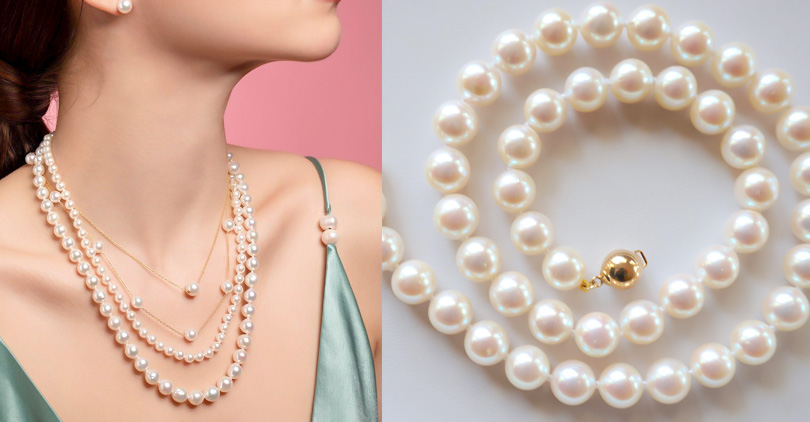
Akoya pearls are known for being perfectly round and having a bright shine. They come from Japan and China, where the cold water helps oysters produce these types of pearls.
Most Akoya pearls are white or cream-colored, but some have rose, silver, or cream overtones. People have liked Akoya pearls since Kokichi Mikimoto figured out how to make cultured ones in the 1900s.
Now, they still symbolize timeless beauty and are often used in pearl necklaces and earrings you'd see at a fancy old-school party.
South Sea Pearls: The Luxurious Giant
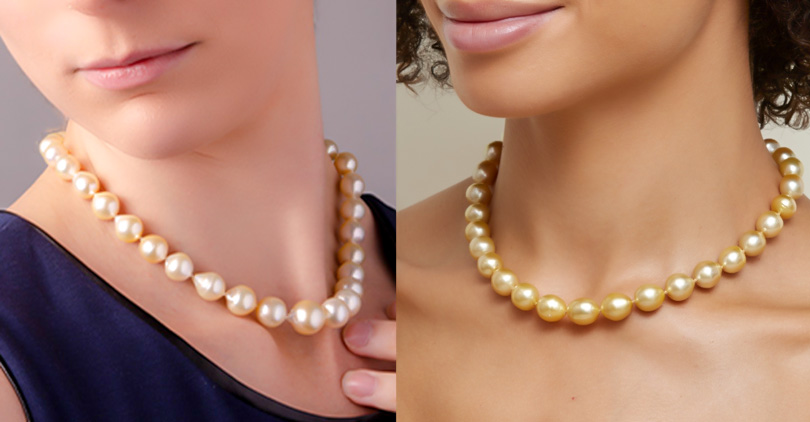
One type of pearl stands out as both the largest and among the most valuable: the South Sea pearl. Found in warm waters off Australia, Indonesia, and the Philippines, South Sea pearls boast a satiny luster that is found in no other gem, along with an enchanting palette spanning white to golden hues.
For thousands of years, divers in these parts have been retrieving natural pearls from oysters living here. Today, farmers continue this tradition by using different approaches.
Appreciated for their rarity as well as their size, South Sea pearls are coveted components of elegant jewelry made for special occasions.
Tahitian Pearls: The Exotic Marvel
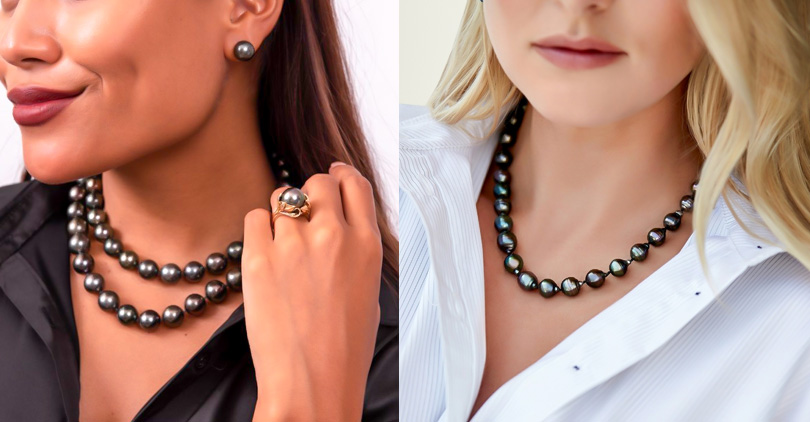
Black pearls, which are farmed in French Polynesia's black-lipped oysters, are known as Tahitian pearls. Despite their name, these pearls aren't exclusively black. Their range of dark hues includes charcoal grey, blue-green, and deep purple.
First appearing on the international market in the mid-20th century, they swiftly became famous for their unusual appearance – often described as exotic or even mysterious – and today enjoy robust demand globally.
Jewellery designers love working with Tahitian pearls because their bold coloring makes it possible to create assertive pieces that are guaranteed to be noticed!
Freshwater Pearls: The Versatile Gem
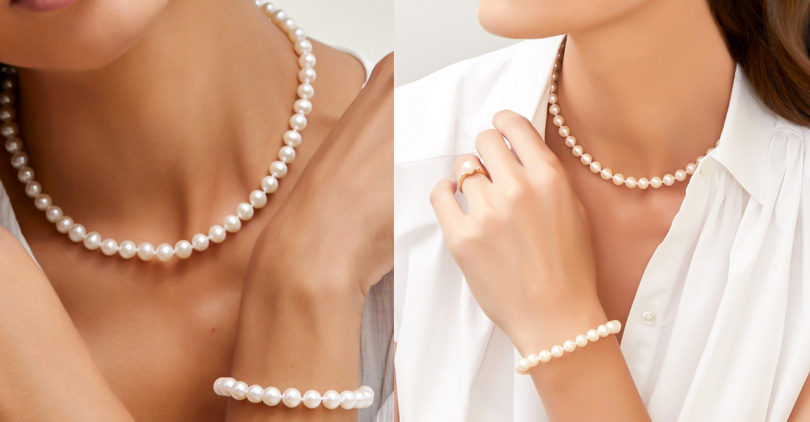
Freshwater pearls are prized for their wide range of colors – including white, pink, lavender, and peach – as well as shapes and sizes. They are cultivated in ponds, lakes, and rivers, mainly in China, and have a history going back millennia.
More plentiful than saltwater pearls – and less expensive – they can be found in all types of jewelry, from everyday wear to high-end pieces, because of their abundance and affordability. Their variety makes for innovative designs: no two freshwater pearl jewels need ever look alike.
The Art of Pearl Jewelry: From Harvest to Heirloom
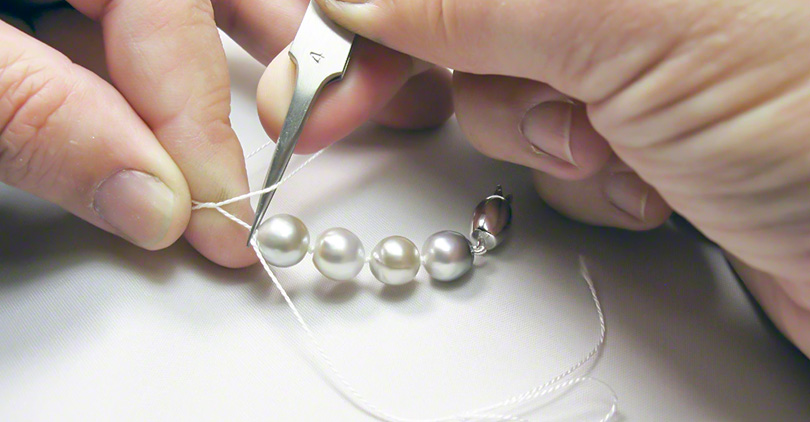
From the moment they are meticulously plucked from the depths of the sea to when they are skillfully crafted into beautiful jewelry, pearls showcase a unique combination of innate elegance and man-made skill.
Harvesting Pearls: The Beginning of Beauty
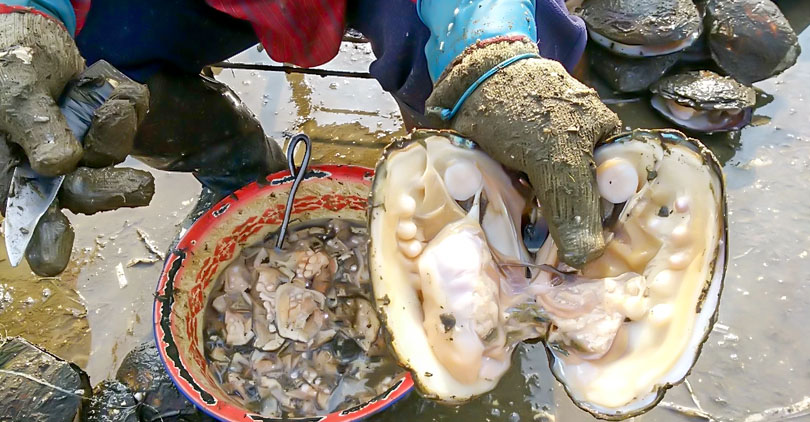
The story behind pearl jewelry starts in the ocean, where pearls are harvested from shellfish. The process involves opening the shell without damaging it, removing the pearl, and making sure the shellfish can still produce pearls.
In the South Sea, for example, skilled divers collect these gems from great depths – each one is treated with extreme caution so as not to mark or damage it. This meticulous harvesting is just the start of a pearl's journey from raw material to fine jewelry.
Crafting Perfection: Shaping and Polishing
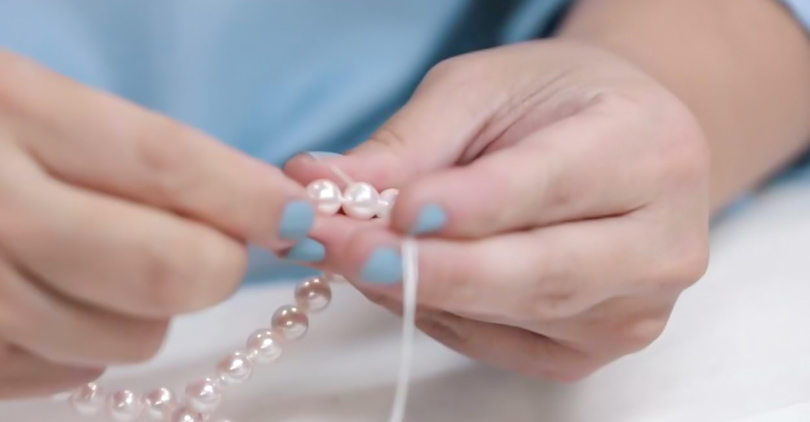
After being harvested, pearls go through an exacting process of cleaning, grading, and polishing. Professionals sort pearls based on their size, shape, luster, and color. They pick out high-quality pearls—for example, those that are perfectly round and have a brilliant shine or smooth surface.
These top-notch pearls may also be polished to boost their natural luster. For example, workers polish a Tahitian pearl with dark overtones so that it shows off more vibrant colors when light hits it. This makes each one look stunningly iridescent.
Designing Masterpieces: Creating Pearl Jewelry

When it comes to pearl jewelry, the true art lies not just in the pearls themselves – but rather in how they are transformed by design and craftsmanship into wearable works of art. Jewelry designers take inspiration from pearls' individual qualities to create pieces that showcase their beauty.
For instance, an elegant strand of Akoya pearls might be used by a designer with classic sensibilities. Meanwhile, someone else who works in a more contemporary style could opt for bold Tahitians when crafting, say, dramatic statement earrings or necklaces.
To give an instance, a beautiful pendant made with South Sea pearls – placed in gold plus circled by precious stones – will transform into a luxurious centerpiece emitting elegance.
Becoming Heirlooms: Timeless Treasures
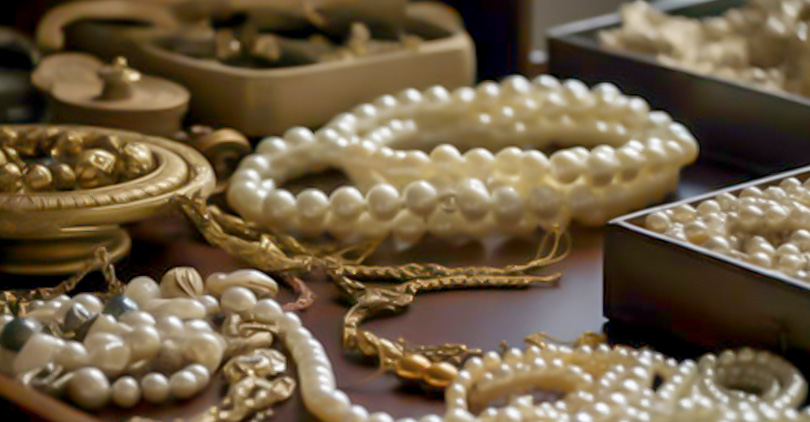
Pearl jewelry is not just an accessory. It holds sentimental value and can be passed down through generations. When we receive a string of pearls on our wedding day or inherit pearl drop earrings from a grandmother, we are receiving something more than beautiful – we are gifted tradition, love, and grace.
Because their beauty does not fade with time, pearls can be worn for decades and still appear both stylish and contemporary. This is one reason why pieces containing these gemstones make such good heirloom gifts; another is their durability.
Pearls on the Pedestal
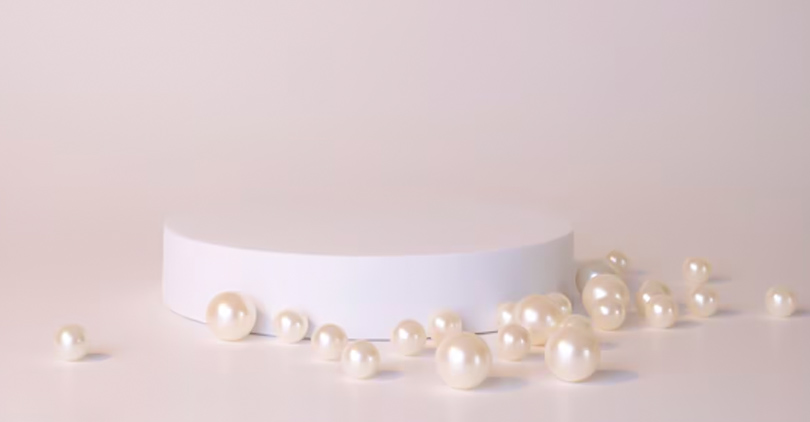
For centuries, pearls have symbolized charm and refinement; they have been used to embellish the most exquisite baubles. Kings and queens, luminaries, trendsetters—the famous pearls they wore could fill books with tales of intrigue and admiration.
The La Peregrina Pearl
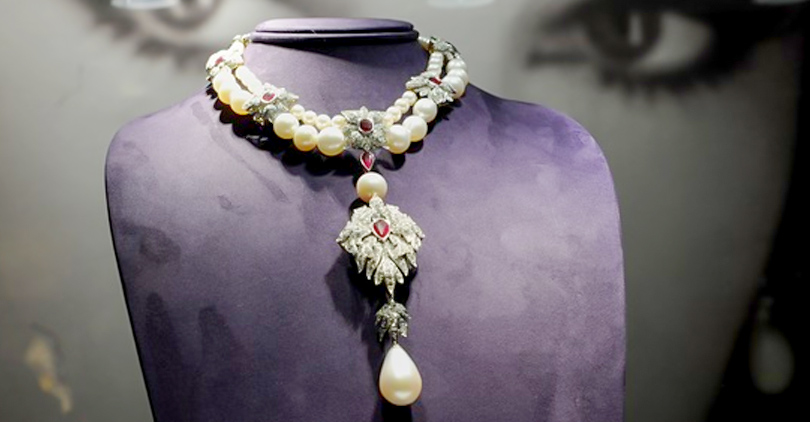
One of the most well-known pearls, La Peregrina, has been around for more than 500 years. It was found in the Gulf of Panama in the 1500s and given to Spanish royalty – at one point, King Philip II even wore it as a decoration on his hat.
The actress Elizabeth Taylor later owned it. For Valentine's Day 1969, her husband Richard Burton bought her La Peregrina. Cartier designed the necklace of pearls, rubies, and diamonds from the pearl hanging.
Princess Diana's Pearl and Sapphire Choker

A pearl necklace that stands out is the one Princess Diana wore, which had pearls all around and a large sapphire in the middle with diamonds encrusted around it.
She wore this choker to many important occasions. The piece shows how versatile pearls can be because they go well with other gems – in this case, diamonds and sapphires – and still look royal.
Queen Mary’s Lover’s Knot Tiara
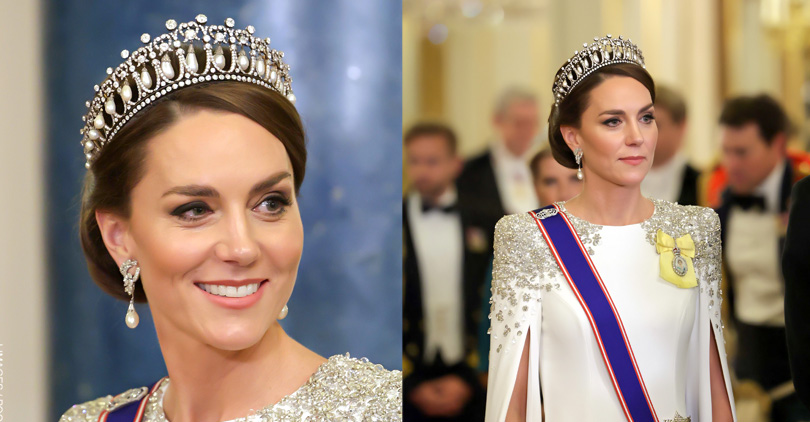
One more famous pearl creation is Queen Mary’s Lover’s Knot Tiara, made in 1913. It shows off both skill and style with diamond arches and swinging pearls.
Princess Diana was closely linked to the tiara, as she frequently donned it for royal affairs. Diamonds and pearls are a classic combination – and this piece illustrates why. Pearls simply make royal outfits better.
Conclusion: The Timeless Appeal of Pearls
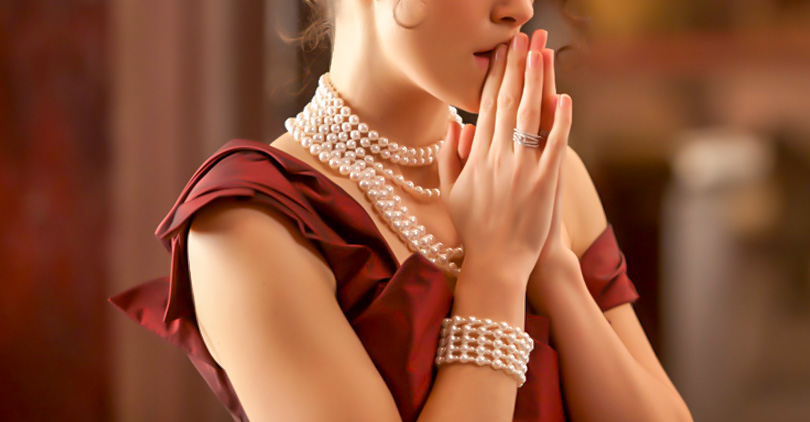
Pearls have proven themselves over time, captivating and motivating people for eras with their inherent loveliness as well as grace. Coming from simple origins within mollusks to becoming works of art adorning fine jewelry, pearls communicate purity along with wisdom – not forgetting an ineffable magnetism that never fades.
Whether worn by royalty and movie stars or passed down through families as beloved heirlooms, pearls hold our attention, unlike any other gem, thanks to their soft inner glow and long history.
To embrace pearls is to revel in their matchless elegance – and the stories behind them. With their enduring appeal, these gems attest to both nature's skill and human artistry: no wonder wearers feel like treasures themselves.


Leave a Comment